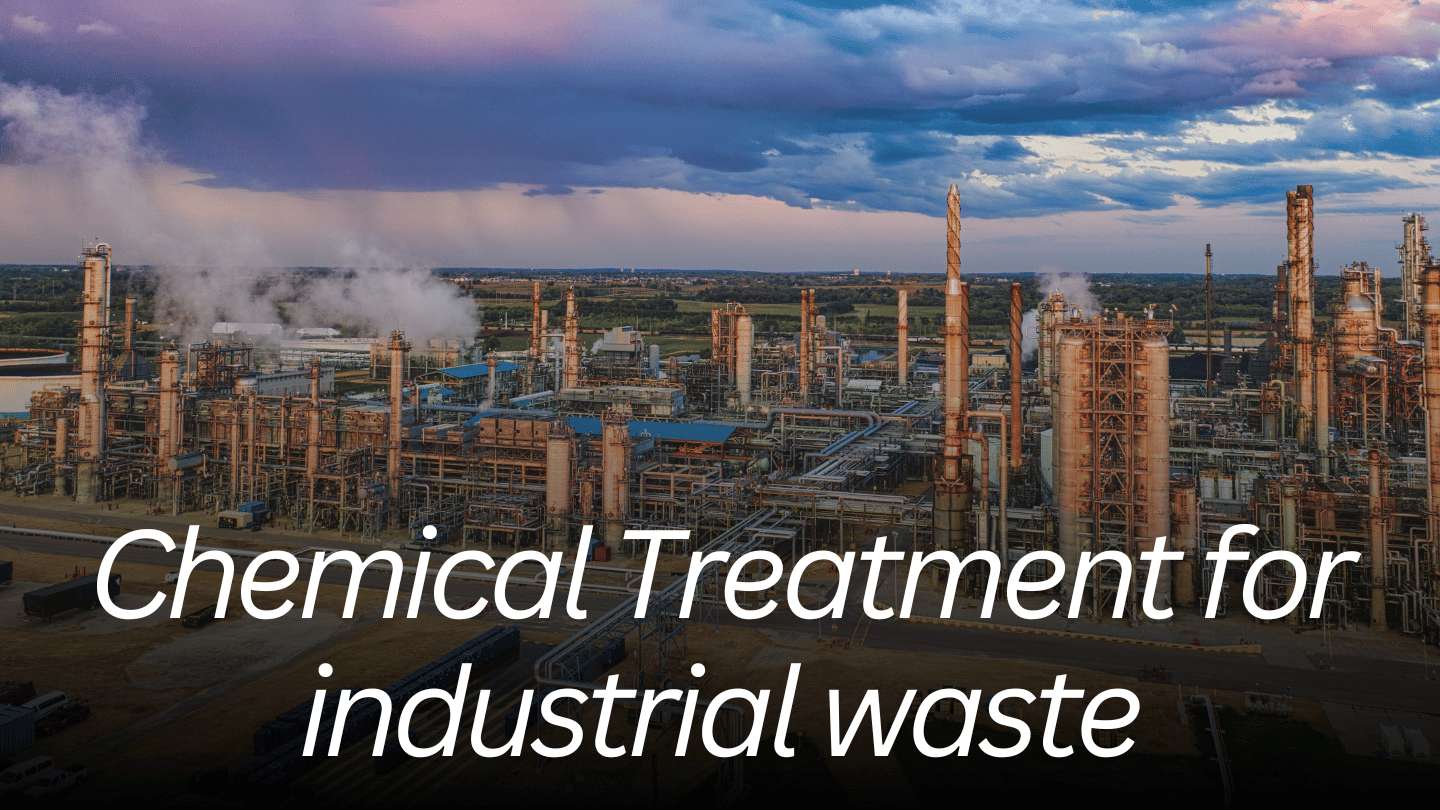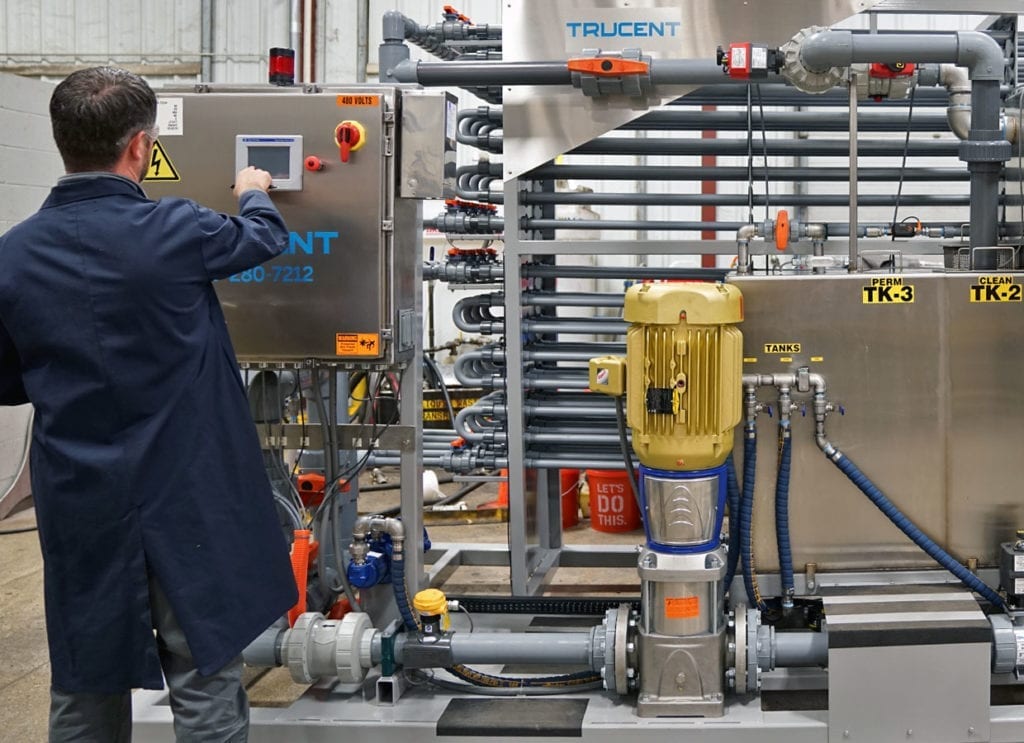Industrial Waste Water Treatment-- Customized Solutions for Effective Wastewater Treatment
Wiki Article
Developments and Advances in Industrial Waste Water Therapy Technologies
The landscape of commercial wastewater treatment is going through a transformative shift, driven by developments that enhance both efficiency and sustainability. As governing standards evolve, the assimilation of AI and machine discovering right into wastewater management systems promises to guarantee and streamline operations conformity.Overview of Drainage Therapy Technologies
Wastewater therapy innovations encompass a variety of approaches designed to eliminate impurities from industrial effluents prior to their launch right into the environment. These technologies are critical for keeping ecological balance and guaranteeing compliance with ecological laws. The main groups of wastewater treatment include physical, chemical, and biological approaches, each serving distinctive objectives based upon the nature of the pollutants present.

Organic treatment techniques use microbes to degrade raw material, making them especially reliable for organic-rich effluents. Techniques like turned on sludge and biofilm activators harness the all-natural deterioration capabilities of bacteria, leading to substantial decreases in biochemical oxygen demand (BOD)
Advanced Purification Techniques
Advanced filtering methods represent a crucial advancement in the world of commercial wastewater treatment, boosting the performance of contaminant elimination procedures. Industrial Waste Water Treatment. These methods include a series of innovations, including microfiltration, ultrafiltration, nanofiltration, and turn around osmosis, which offer consecutive barriers for various fragment dimensions and chemical frameworksMicrofiltration and ultrafiltration make use of membrane layer systems to eliminate put on hold solids, microorganisms, and bigger organic particles, enhancing the top quality of effluent before more therapy. Nanofiltration bridges the space in between ultrafiltration and reverse osmosis, properly getting rid of divalent ions and natural compounds, thus lowering the tons on downstream procedures.
Reverse osmosis offers the greatest degree of purification by enabling just water and tiny particles to go through its semi-permeable membranes, making it perfect for recovering high-grade water from commercial effluents. Current innovations in membrane layer innovation, consisting of the development of more sturdy and fouling-resistant products, have actually significantly boosted operational effectiveness and decreased costs.
Including these sophisticated filtering methods not only boosts the general therapy procedure however additionally adds to sustainability efforts by enabling water reuse and source recuperation in industrial settings. (Industrial Waste Water Treatment)
Organic Therapy Advancements

In addition, the development of crafted biological systems, such as membrane bioreactors (MBRs), incorporates biological therapy with advanced membrane filtration. This assimilation enables higher effluent quality and lowered impact, making it appropriate for space-constrained commercial facilities. Developments in genetically crafted microbes have actually likewise emerged, improving the biodegradation of certain contaminants, such as navigate here pharmaceuticals and hefty steels, that are commonly challenging to eliminate.
Furthermore, the execution of bioaugmentation approaches, where useful microorganisms are introduced to improve the existing organic therapy procedures, has actually shown promising lead to enhancing therapy efficiency. These developments jointly symbolize a fad in the direction of even more effective and lasting biological therapy methods that can adapt to the progressing complexities of commercial wastewater streams. As industries proceed to focus on environmental compliance, these biological advancements will certainly play a critical role in wastewater administration.

Resource Recovery Methods
In industrial settings, the assimilation of resource recovery techniques has come to be significantly essential for improving sustainability and reducing waste. These techniques concentrate on drawing out useful materials and power from wastewater streams, therefore changing possible toxins into multiple-use resources.One popular strategy is nutrition recovery, where nitrogen and phosphorus, usually present over in wastewater, are captured and converted into plant foods. This not only minimizes environmental influences but also supplies a circular economic climate option for agricultural applications. Furthermore, read more technologies such as anaerobic digestion permit the conversion of organic waste into biogas, a renewable resource source that can offset fossil fuel usage in commercial operations.
Furthermore, progressed filtering and membrane layer modern technologies assist in the recovery of commercial byproducts such as metals and salts. These recouped products can be reintegrated right into manufacturing processes, minimizing the demand for virgin resources.
Future Fads in Drainage Administration
As sectors increasingly prioritize sustainability, the future of wastewater management is readied to go through substantial transformations. Technological advancements, such as expert system and equipment learning, will make it possible for much more efficient monitoring and monitoring of wastewater systems. These technologies can anticipate upkeep demands, enhance treatment procedures, and improve decision-making, eventually reducing operational costs and environmental influence.Furthermore, the integration of circular economy concepts will certainly play an essential role in wastewater monitoring. Industries are expected to change towards systems that not just deal with wastewater yet also recuperate valuable resources, such as nutrients, water, and power. This change will certainly reduce waste and promote the reuse of products, straightening with worldwide sustainability objectives.
Arising treatment strategies, such as membrane layer bioreactors and advanced oxidation procedures, will additionally improve the effectiveness of wastewater treatment, permitting for better effluents appropriate for reuse. Additionally, regulative frameworks are likely to evolve, emphasizing stricter requirements for wastewater discharge and encouraging industries to embrace innovative therapy remedies.
Final Thought
To conclude, the advancement of industrial wastewater treatment technologies demonstrates a considerable shift in the direction of enhanced performance and sustainability. Innovations in innovative filtering methods, organic treatments, and source recovery techniques highlight the sector's dedication to ecological stewardship. The combination informative post of expert system and artificial intelligence even more enhances these processes, guaranteeing regulative compliance and promoting a circular economic situation. Proceeded advancements in these locations will certainly play a vital duty fit the future of wastewater administration and shielding vital water resources.The landscape of industrial wastewater therapy is undergoing a transformative shift, driven by advancements that boost both efficiency and sustainability.Wastewater treatment innovations include an array of approaches created to eliminate impurities from commercial effluents before their release into the atmosphere.Using the power of organic processes has led to substantial technologies in the treatment of commercial wastewater.Additionally, the application of bioaugmentation approaches, where advantageous germs are introduced to boost the existing biological therapy procedures, has shown promising outcomes in enhancing treatment efficiency. These advancements collectively symbolize a trend towards even more reliable and sustainable organic therapy methods that can adapt to the evolving complexities of commercial wastewater streams.
Report this wiki page